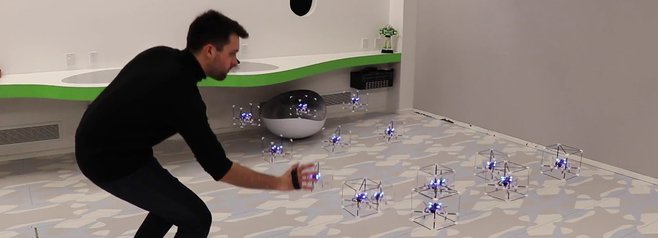Cube-shaped griddrones can be programmed to form patterns in mid air

Back in October 2018, researchers gathered in Berlin for ACM Symposium on User Interface Software and Technology. The symposium featured projects on web user interfaces, virtual and augmented reality, tangible computing, and computer-human interaction, and more. GridDrones are a system of drones developed by Engineers that serves as flying pixels and can transform thin air into a screen. The system was introduced by Calvin Rubens, Sean Braley, Roel Vertegaal, and Timothy Merritt during the Human-Robot Symbiosis session.
The system uses a cube-shaped matrix of flying nanocopters that can be controlled by someone as they hover to craft different patterns. Specific animations can also be created using the flying nanocopters by programming them according to your wishes.
The system is also known as the “self-levitating programmable matter platform.” It comprises a fleet of drones used to represent the voxel grid relief maps. They have the ability to render 3D transformations and unsupported structures. The scale and number of voxels are only restricted by the size of the space and budget.
The set of voxels can be selected manually, and the grid deformations can be applied upon this voxel lattice interactively. A continuous topological relationship is assigned between the voxel sets by the users. It determines how the voxels and voxel sets will move in relation to each other. It also draws out selected voxels manually from the lattice structure manually.
It is possible to create such unsupported structures using this simple technique which can then be oriented freely and translated in 3D. For simple physical shape morphing animations, the shape transformations can also be recorded.
Instead of just dragging and dropping apps on the smartphone, the technology will allow the users to manipulate flying objects in a physical space. It would completely change how the users currently view the landscape of a phone or computer “screen.”
Video by Richard Milton
h/t: Design Boom